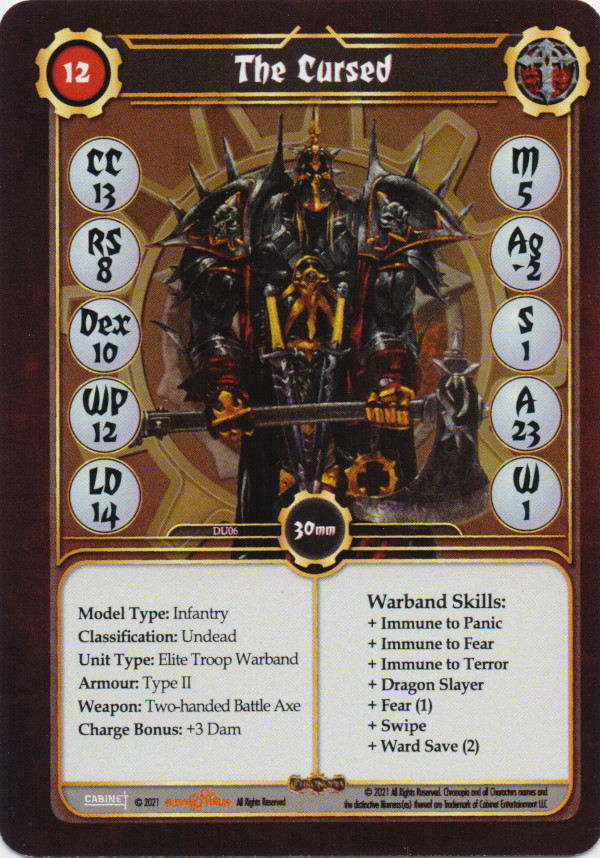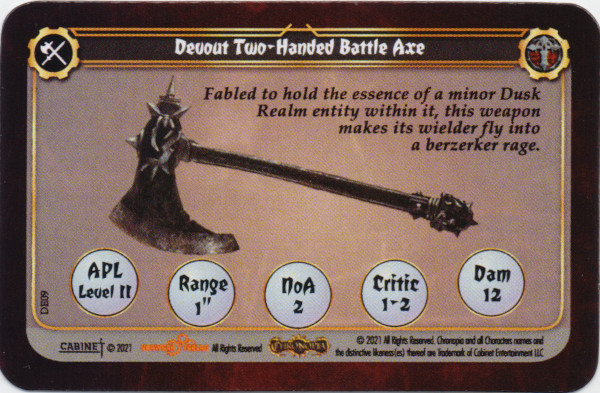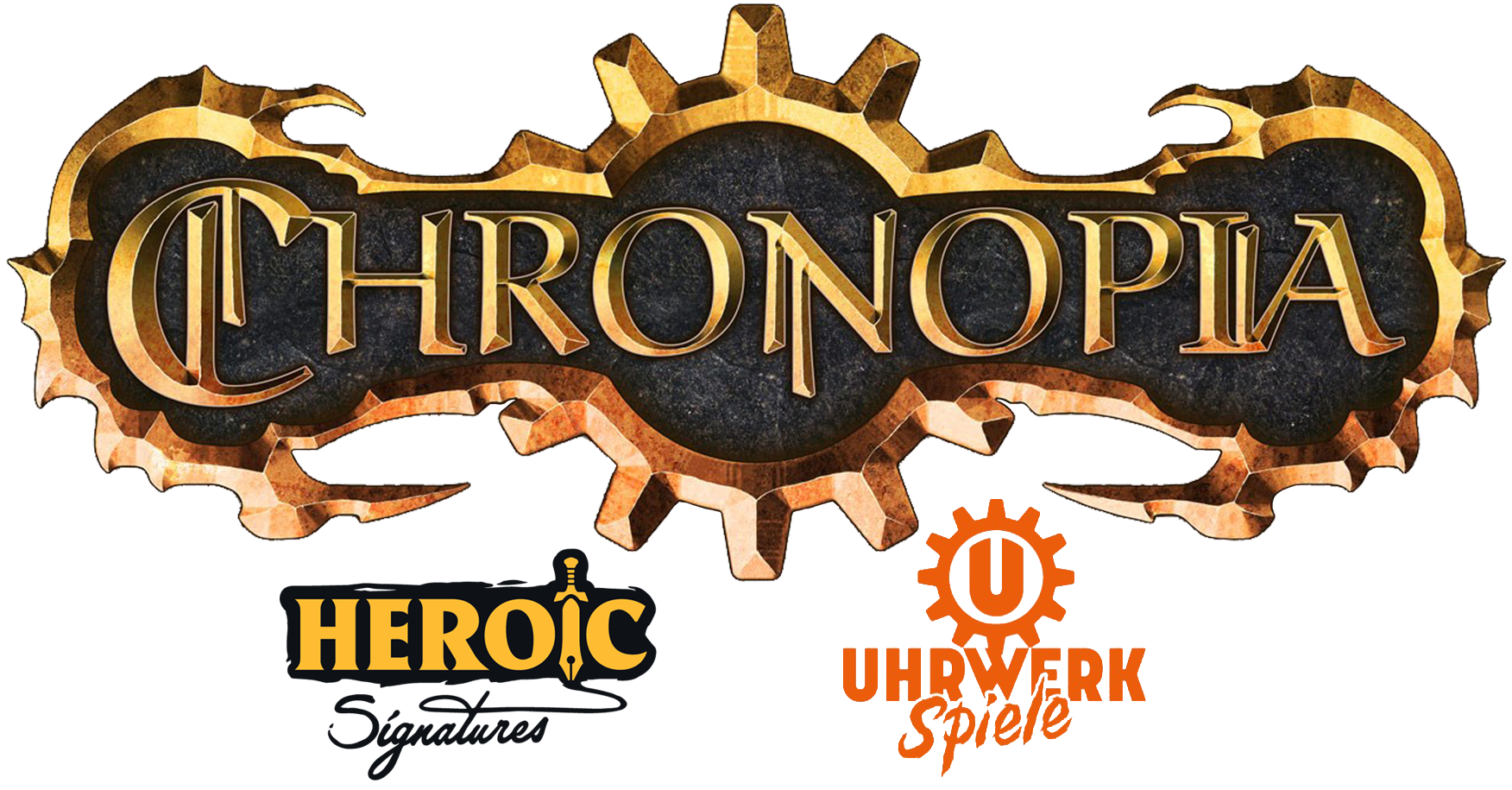Every model in Chronopia has a Characteristic profile which describes how it will perform on the battlefield. The profiles for each model can be found in the appropriate Army Book or on the Unit Card.

Basic Characteristics
Each profile begins with the name for the particular type of model followed by a line of abbreviations known as its “stat line”. These Cover all the standard Characteristics of the model.
- Close Combat (CC) This tells you how good the model is in hand-to-hand combat.
- Range Skill (RS) This tells you how good a model is with Ranged Weapons.
- Dexterity (Dex) This value measures hand-eye coordination, reflexes, and balance.
- Will Power (WP) This tells you how good the model is at Casting or resisting psychic powers such as Spells and Curses.
- Leadership (LD) This Characteristic indicates how well trained and disciplined a model is, and how effectively it can control other models in the Unit.
- Move (M) This dictates how many inches the model can Move using a Basic Move.
- Agility (Ag) This negative value takes account of your opponents Skill in Close Combat.
- Strength (S) This determines how strong your model is.
- Armour (A) This indicates how well protected the model is against Damage.
- Wounds (W) This score tells you how tough the model is and how many hits it can take before being removed as a casualty.
More unit data
The following data are an extension of the Statline and still provide important basic information.
- Model type: It is important to remember a Unit’s Type due to the effects of Spells, Weather, weapons and other special abilities.
- Classification: These are primarily used to determine model vulnerabilities and advantages.
- Unit type: A ‘Unit’ can consist of one model, such as a ‘Monster’ or ‘Individual’ character, or a number of models fighting together as a ‘Warband’.
- Point cost: Every model in Chronopia has a value known as its Point Cost. These points are an indication of the relative strength of the model.
- Armour: It is a part of the Advanced Rules and shows a more detailed indication of the unit’s protection.
- Weapon: The weapon the unit is equipped with.
- Base Size (in mm): This indicates the base size in millimetres (mm) you have to place your model on, and determines the size of the model itself.
- Charge Bonus: Shows the bonus on a charge.
Unit composition
This is where the unit is set up. In a warband, other characters, leaders and specialists are usually added.
The point costs are given if additional models are added.
Warband Skills
If a unit has special skills then they will be listed here.
Weapon Stats

Weapons and shields have their own stats line. These consist of all or more of the following values.
- Name: Describes the name of the weapon.
- Armour Piercing Level (APL): Its a part of the Advanced Rules and represents how good it is at penetrating Armour.
- Range: The effective distance of the weapon, measured in inches.
- NOA (Number of Attacks) The number of attacks that can be made during a Shooting or Close Combat Attack.
- Critic: (x-y) If you roll a number between x and y (called the Critic Interval) you score a Critical Hit.
- Damage: This Characteristic indicates the amount of Damage a weapon can inflict.
- Weapon Skill: If the weapon has a special skill then it will be described here.
